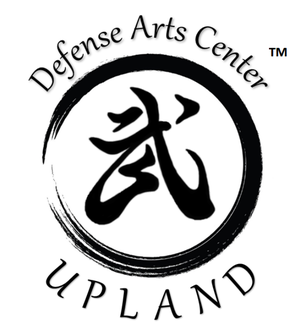SATURDAY, OCTOBER 8th, 2016
11am to 1pm
Presented by Franco Sanguinetti Sensei
at the Defense Arts Center Dojo in Upland CA
For youth and adult brown and black belts
$10 suggested donation
Sanchin Kata
Sanchin is a kata of Southern Chinese origin that is considered to be the core of several martial arts styles, including the well-known Okinawan Karate styles of Goju Ryu and Uechi Ryu. The only stance used in the kata –the sanchin ("three battles") dachi (“stance”) – is where the kata gets its name. Sanchin-dachi is a practical stance, and yet is among the most difficult stances to master. The placement of the feet protects against sweeps, the pulling-together of the thighs protects against groin kicks, and the grounded but flexible tension in the hips and legs enables strength to be connected to the earth, channeled through the whole body, and focused into strikes. In Gōjū, there are two Sanchin kata. The first, Miyagi's Sanchin ("sanchin dai ichi"), is widely taught as the initial Kihongata (“basic kata”), as intended by its creator, Chojun Miyagi. It has no turns so the karateka goes forward and backwards while facing ahead. The second, Higashionna's Sanchin ("sanchin dai ni") is the older, more original version of the kata as taught by Higashionna Kanryo. In this version, the karateka always moves forward but makes two 180 degree turns.
Some say the meaning of sanchin relates to the three journeys of life: developing the body, mind, and spirit. Through regular physical training, practicing basic exercises and kata properly, one learns to develop the capabilities of the body. Later, through striving to understand the history and application of the martial arts, one develops the knowledge and creativity of the mind. Development of the spirit is the third and most important goal, seeking to bring the body and mind into harmony with each other and with the world. Diligent practice of the Sanchin kata allows the karateka to make progress on all three of these journeys.
Sanguinetti Sensei
Franco Sanguinetti began his Budo training in 1972 in his homeland of Perú, a South American country with a large population of citizens of Japanese ancestry. Sanguinetti Sensei’sgrandparents were themselves immigrants to Perú from Italy and Spain. Sanguinetti Sensei counts among his influences many strictly traditional Japanese and Okinawan martial arts instructors, many with well-recognized names such as Morio Higaonna, Juichi Kokubo, John Roseberry, Shinpo Matayoshi, Gakiya Yoshiaki, and Seisho Itokazu.
Sanguinetti Sensei holds the rank of Nana Dan (7th Degree Black Belt) in Okinawan Gōjū Ryu Karate and he has trained and is ranked in Kyokushinkai, Shotokan, and Shito Ryu Karate. He credits his wide exposure to Karate styles for giving him a more complete understanding of the martial arts and informing his work as the founder and chief instructor of the Bushikan Budo Kyokai.
Sanguinetti Sensei also holds rank of Nana Dan in Matayoshi Kobudo (traditional Okinawan weapons). In 1982, he moved to Okinawa to train with Matayoshi Shinpo Sensei (1921-97). After Matayoshi Sensei’s passing, Sanguinetti Sensei has continued to train regularly with the senior instructors of the Kobudo Kodokan dojo in Okinawa.
Post-script: The seminar was well-attended and a lot of great information about the history of Goju-Ryu and the Sanchin kata was shared by Sanguinetti sensei with our dojo. As Sensei Ty mentioned, he plans to incorporate this kata and its focus on internal dynamics into our dojo's curriculum.







